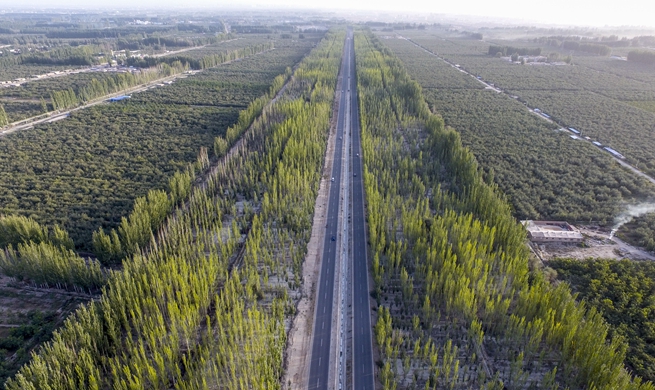CHICAGO, Oct. 18 (Xinhua) -- U.S. researchers discovered that when certain coated nanoparticles interact with living organisms it results in new properties that cause the nanoparticles to become sticky. The impact on cells is not known.
Using experiments and computer simulations, a research team of Northwestern University (NU) chemists and colleagues from the national Center for Sustainable Nanotechnology studied polycation-wrapped gold nanoparticles and their interactions with a variety of bilayer membrane models, including bacteria.
They found that a nearly circular layer of lipids forms spontaneously around the particles. These "fragmented lipid coronas" have never been seen before, according to the results published on Thursday in the journal Chem.
"The nanoparticles pick up parts of the lipid cellular membrane like a snowball rolling in a snowfield, and they become sticky," said Franz M. Geiger, professor of chemistry in NU's Weinberg College of Arts and Sciences. "This unintended effect happens because of the presence of the nanoparticle. It can bring lipids to places in cells where lipids are not meant to be."
By pairing spectroscopic and imaging experiments with atomistic and coarse-grain simulations, the researchers identified that ion pairing between the lipid head groups of biological membranes and the polycations' ammonium groups in the nanoparticle wrapping leads to the formation of fragmented lipid coronas.
These coronas engender new properties, including composition and stickiness, to the particles with diameters below 10 nanometers.
The study's insights help predict the impact that the increasingly widespread use of engineered nanomaterials has on the nanoparticles' fate once they enter the food chain. Scientists can use the findings to design a better ligand coating for nanoparticles that avoids the ammonium-phosphate interaction, which causes the aggregation.
Personal electronic devices, smartphones, computers, TVs, tablets, screens of all kinds, are a significant and growing source of the world's electronic waste. Many of these products use nanomaterials.

















